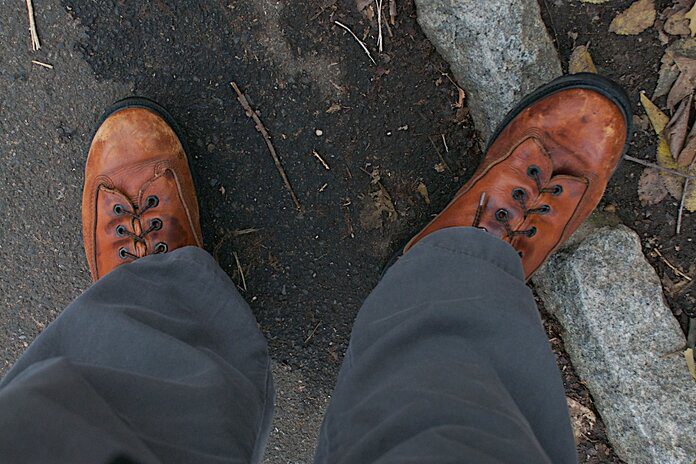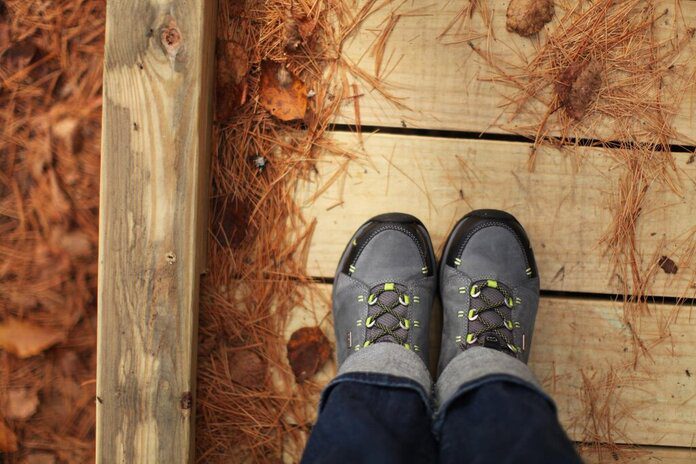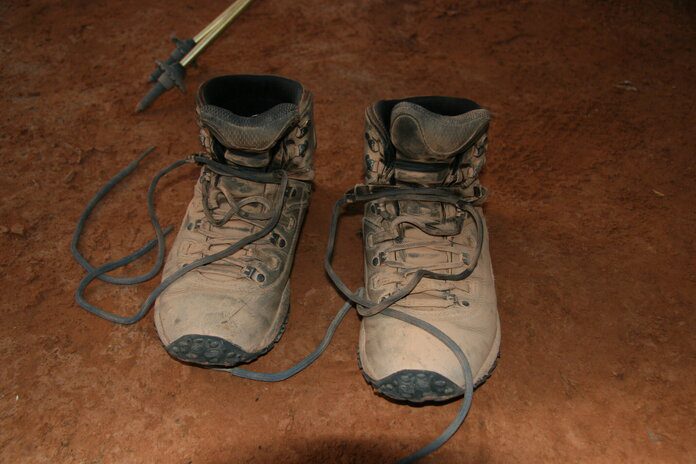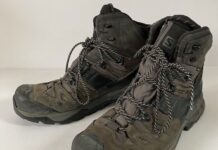No one wants to hike in boots that hurt their feet or are otherwise uncomfortable.
In fact, one of the most common complaints I hear from new hikers is that they’ve spent a lot of money on a good pair of boots only to find that they aren’t comfortable.
Since hiking boots are such a personal item, it’s often challenging to recommend which ones will work best for any specific hiker.
Although I can make general recommendations on types and brands with which other team members or I have had good experiences, I often tell people to try “breaking in” their boots before giving up on them completely.
Often, newly purchased boots that seem uncomfortable or painful can quickly turn into a hiker’s favorite pair simply by adequately breaking them in.
Here I’ll talk about everything you need to know about how to break in hiking boots and some tips on shopping for the best boots to meet your needs.
How Long Does It Take To Break In Hiking Boots?
Different factors determine how long your new hiking boots will take to break in (boot material, quality, stiffness, fit, etc.). Generally, fully and properly breaking in hiking boots will take you between 1 and 4 weeks.

Do You Need To Break In Hiking Boots?
Yes, you need to break in hiking boots because they need to mold your feet properly. If you do not take the time to break in your new hiking boots adequately, you will almost certainly experience blisters, foot pain, and other issues, even if they are the correct size.
Wearing proper hiking socks and hiking insoles with your new boots will also help prevent blisters and pain.
Breaking In New Hiking Boots Step-By-Step
Once you’ve purchased that new pair of comfy hiking boots that you’ve been eying, begin the process of breaking them in.
For the best way to break in hiking boots, you cannot try to rush it. It requires patience and time, as no good “fast” way exists to break in your boots.
Time needed: 3 days
Here are the proper steps for how to break in hiking shoes.
- Start Wearing Them Around the House
Using the socks you would wear while hiking, put your boots on and wear them around the house or for your daily errands. At first, they will feel stiff, but as you perform these daily tasks, the shoe’s sole is slowly molding to your foot.
In about a week, your boots should start to feel comfortable (although they may still be stiff).
- Take a Short Hike With Your Boots
Now that you’ve started breaking in your boots by wearing them around the house, you’re ready to try them out on a trail. However, don’t take a long hike just yet. Start with a 2-3 mile hike on easy terrain.

- Take Some More Challenging Hikes
After the first hike, gradually build up to longer, more challenging ones with more difficult terrain. As you go on these longer hikes, your feet should start to grow more accustomed to the boots, and you’ll get a feel for their comfort and performance.

- Test Your Boots With a Day Hike
When you feel like your feet are comfortable in the boots, complete your test by doing a full-day hike. If your boots feel good at the end of this trek, you’ve officially broken in your boots, and you are ready to go!

Why You Should Avoid Breaking into Boots Fast?
Avoid trying to break in your boots too fast because using methods such as walking in soaking wet boots may cause damage to your boots or reduce their lifespan. Additionally, you will undoubtedly get blisters on your feet if you try to rush the break-in process.
Blisters will negate the purpose of breaking in your boots because your feet will still hurt when hiking.
Related Articles:
Before Buying Boots Recommendations

When it’s time to replace your hiking boots, make sure that you consider certain things before making a purchase. Remember that not all boot types will work for all hikers.
Consider the season or weather you typically hike and the general terrain you prefer. These things will affect the type of grip that you need.
Also, consider your foot and any issues that you already know that you have. Some boots work great for hikers with narrow feet but will not be comfortable if you have wider feet and vice versa.
Flat-footed hikers or those with plantar fasciitis must consider these things when buying new boots.
After testing dozens of hiking shoes and wearing even more hiking boots, to help you get started, we’ve compiled the following three guides with our recommendations for every foot type:
FAQs
Hiking boots are built to be rigid, rugged, and strong. Therefore, they do not stretch much. Instead, they change their shape to mold to your foot as you break them in. You should not rely on your boots stretching to make them more comfortable.
You can reduce the time it takes to break in your hiking boots by soaking them thoroughly in water and then hiking in them until they are completely dry. This method may, however, damage your boots and may ruin their weatherproofing.










